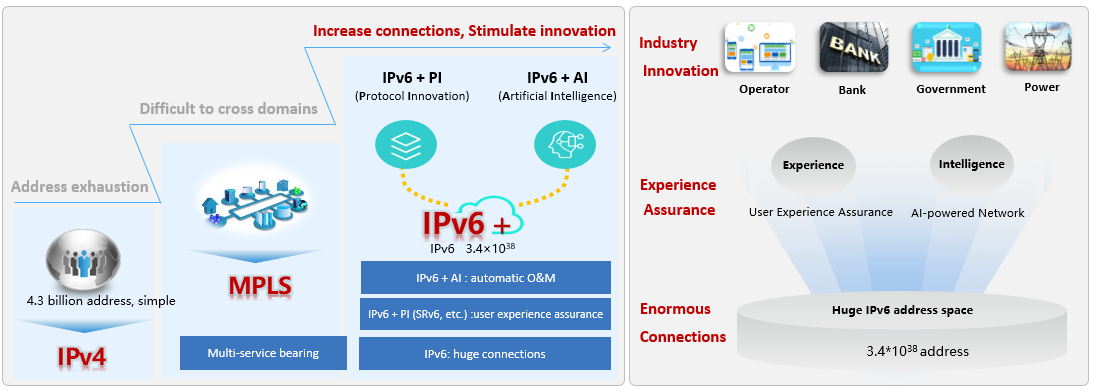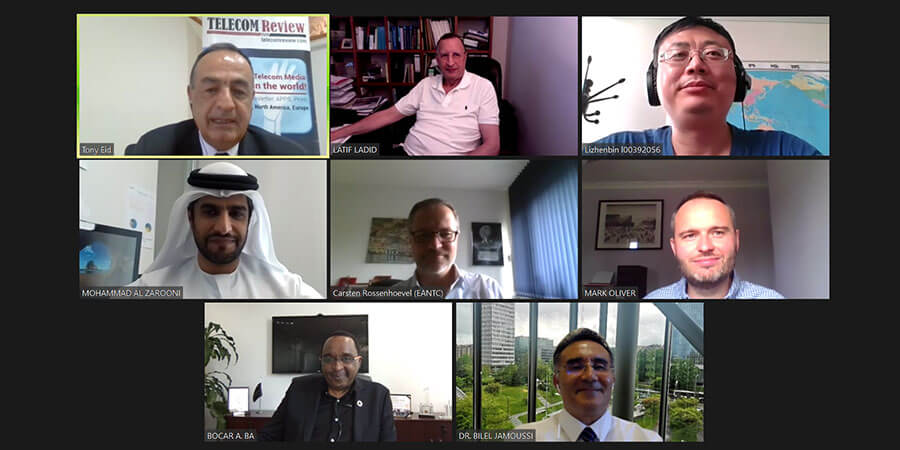On July 16th, Trace Media, parent company of the Middle East’s leading telecom news platform, Telecom Review, held a webinar, of around 200 attendees, which was endorsed by SAMENA, IPv6 Forum, ETSI, EANTC and OMDIA to discuss the latest global trends in the IPv6 industry, as well as the outlook for IPv6+.
The webinar which was titled: ‘IPv6+: IPv6 Enhanced networks, Policy Makes Practice, Practice Makes Perfect’ mobilized experts from various backgrounds, all pertaining to the telecoms industry.
The speakers included: Bocar A. Ba, CEO of SAMENA Telecommunications Council; Mohammad Al Zarooni, Executive Director of the UAE TRA; Latif Ladid, Founder and President at IPv6 Forum & Chair of ETSI IP6 ISG; Carsten Rossenhoevel, Managing Director and Co-Founder of EANTC AG (European Advanced Networking Test Center); Mark Oliver, Global Consulting Director, Service Provider & Communication at OMDIA; Dr. Bilel Jamoussi, Chief of Study Groups Department at the ITU; and Robin Li, IP Protocol Expert and IETF IAB (Internet Architecture Board) Member.
Toni Eid himself, the CEO of Trace Media International & Founder of Telecom Review was moderating the virtual session.
The industry experts discussed the latest trends in the IPv6 industry, the importance of IPv6-based ICT infrastructure to economic development, government policies that promote the IPv6 field, IPv6+ (enhanced innovations), and the theory and practice of IPv6 enhanced innovations as well as the progress of its standardization and interoperability testing.
Mark Oliver, Global Consulting Director at OMDIA, said: “The industry’s collected wisdom is already using IPv6 as the future. Governments are pushing to standardize IPv6.
“If you think about the characteristics of a mobile operator, IPv4 is quite limited. Demand is moving to applications like IoT and 5G that are going to need strong performance, great security and reliability. There is a need to invest in infrastructure that supports IPv6.”
In reference to the development of IPv6 and its economic significance, Bocar A. Ba, CEO of SAMENA Telecommunications Council, stated: “We have more than 53% of the world connected to the INTERNET. This is what we have to keep in mind to integrate IPv6.”
He added, “IPv6 is the key to billions of connected devices. IPv6, with its capabilities, is the only way we can fulfil the dream of having billions of devices being connected.”
Commenting on the ITU’s work in this space, Bilel Jamoussi, Chief of Study Groups at the ITU, said: “ITU encourages the government to release IPv6 industrial policies. One of the main contributions the ITU is doing in this space is capacity building. It is one of the essential components to move from IPv4 to IPv6.”
Following Jamoussi’s discussion on the ITU’s efforts in promoting IPv6 deployment and adoption, Mohammad Al Zarooni, Executive Director of the UAE’s Telecommunications Regulatory Authority, said: “We continue to support the adoption of IPv6 and we believe that the government can contribute to its promotion.”
Adding that: “Our main national IPv6 strategy is to ensure that all devices are compatible with IPv6. Most devices now have become compatible by design. It will be a seamless transition to the end user once IPv6 is adopted.”
“When it comes to our efforts with other agencies, we ensure that we collaborate on regional, national and international levels to spread awareness and further the adoption of IPv6,” he said.
Latif Ladid, Founder and President of IPv6 Forum and Chair of ETSI IP6 ISG discussed the evolution of IPv6 and the challenges that it may face in the current 5G and cloud era.
“In the era of 5G and cloud, various new services and applications are emerging one after another, which puts forward higher requirements on the network. To tackle those requirements, IPv6 needs to be combined with innovative technologies to generate ground-breaking IPv6+ networks. IPv6+ is IPv6 Enhanced Innovation for 5G and Cloud era, represented by protocol innovation such as SRv6, BIER6, etc. , combined with AI such as network analysis, intelligent tuning, etc. , which can meet the requirements of path planning, quick service provisioning, SLA assurance, automatic O&M, quality visualization, and application awareness. The work and deliverables produced and published at the ETSI IP6 ISG on the real world use cases are of great value to the industry to learn from the lessons learned of the successful deployment of IPv6 among ISPs, MNOs but also on proper deployment of 5G, IoT, 6TiSCH and the enterprise ecosystem to name a few” said Ladid.
Robin Li, IP Protocol Expert and IETF IAB Board Member, said: “We think network programming capabilities based on IPv6 are essential to its growth. IPv6+ standard has made great progress. SRv6 has released multiple RFCs and WG Drafts. And certain operators has deployed SRv6. This is a great chance for IPv6 to match the requirements of the advanced 5G and cloud era.”
Carsten Rossenhoevel, Managing Director and Co-Founder of EANTC AG, then proceeded to discuss the testing of IPv6+ Interoperability. In reference to this, he said: “SRv6 and IPv6 can be compatible with legacy parts. SRv6 has gained its firm position with several vendors supporting this trend. Now with 5G, network slicing, and numerous services resulting from it, routing in the network becomes more important. And this is where IPv6+ becomes an advantage.”
